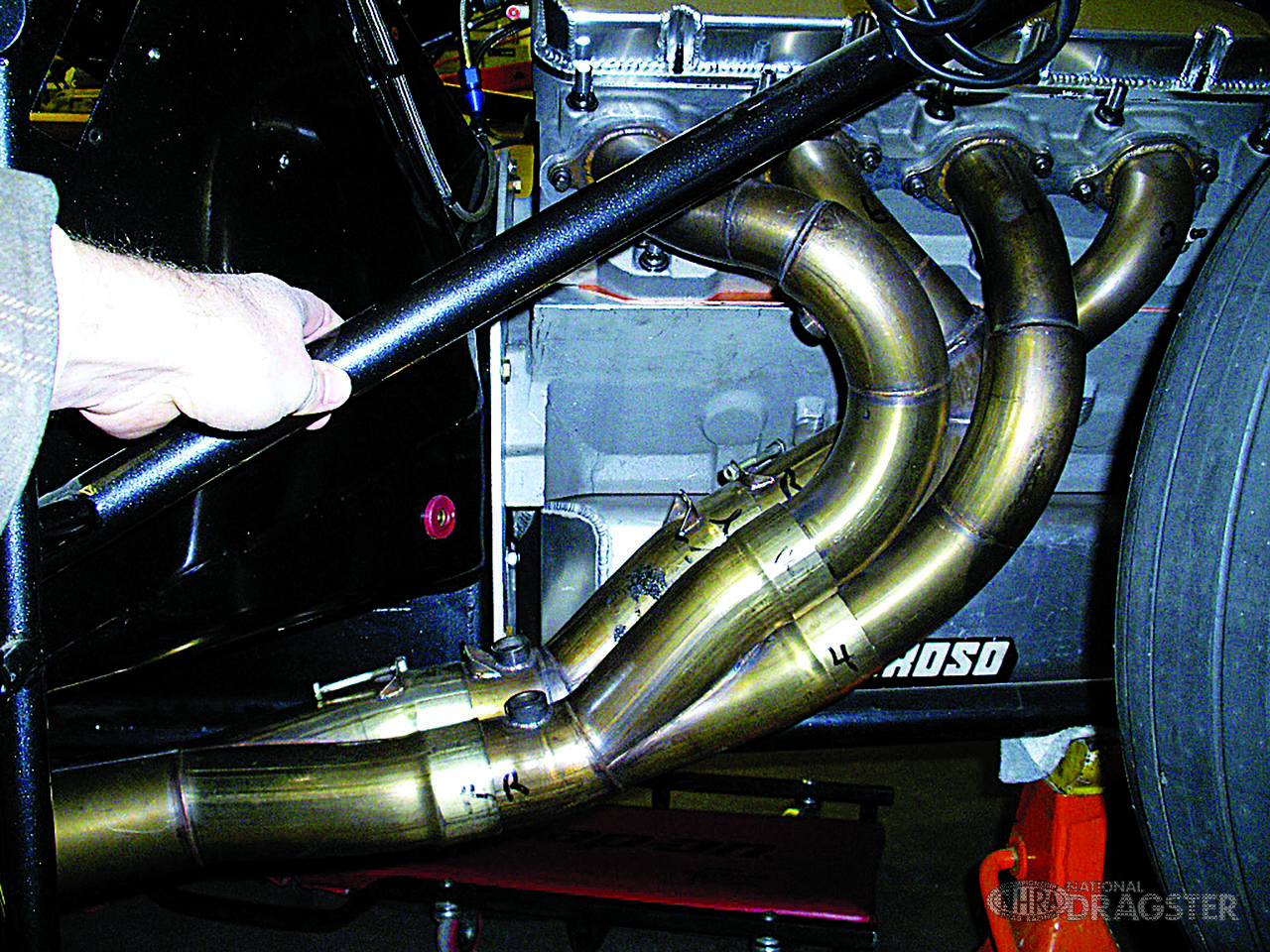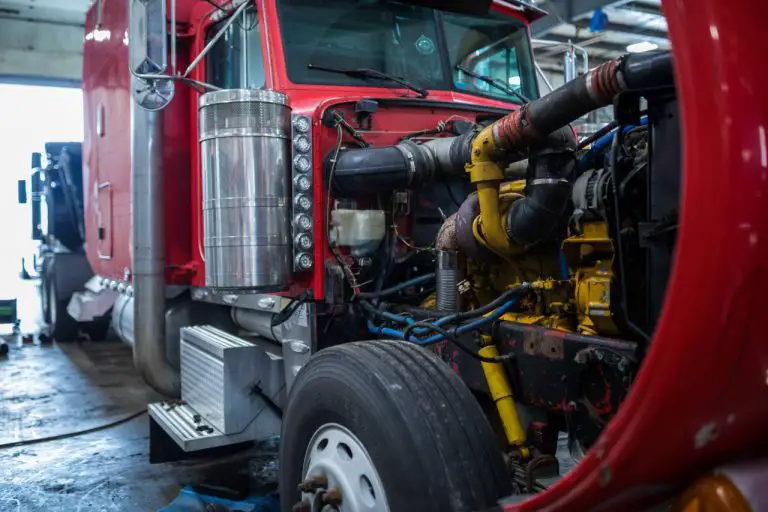Maximizing Efficiency: The Power of Exhaust Manifolds for Optimal Gas Flow
Exhaust manifolds play a vital role in optimizing the flow of exhaust gases for efficient engine performance. By channeling and directing the exhaust gases from the various cylinders into a single pipe, the exhaust manifold ensures that the gases are expelled from the engine quickly and smoothly, reducing back pressure and maximizing power output.
This improves fuel efficiency, enhances throttle response, and reduces emissions. Additionally, exhaust manifolds can be designed to improve the scavenging effect, where exhaust gases help draw in fresh air and fuel mixture for improved combustion. Overall, exhaust manifolds are essential components in ensuring efficient exhaust gas flow and optimal engine performance.

Credit: www.nhra.com
Enhancing Engine Performance
Exhaust manifolds play a crucial role in enhancing engine performance through efficient exhaust gas flow. By optimizing the design of exhaust manifolds, the overall power of the engine can be improved significantly. The significance lies in maximizing efficiency, which contributes to optimal gas flow.
This, in turn, leads to better combustion and increased engine power. The design of the exhaust manifold affects the flow and pressure of exhaust gases, ensuring that they are effectively expelled from the engine cylinders. By carefully considering factors such as size, shape, and material, exhaust manifolds can be tailored to specific engine requirements.
This customization allows for improved scavenging and reduced backpressure, resulting in enhanced engine performance. Therefore, selecting the right exhaust manifold design is essential for maximizing engine power and efficiency.
Understanding Exhaust Manifold Design
Exhaust manifolds play a crucial role in optimizing the flow of exhaust gases in an engine. The design of the exhaust manifold significantly impacts the overall efficiency of the system. Understanding the differences between primary and secondary exhaust manifolds is essential in achieving optimal performance.
Primary manifolds collect exhaust gases directly from the engine’s cylinders, while secondary manifolds further channel the gases into the exhaust system. Headers, a common component of exhaust manifold configurations, help improve engine efficiency by equalizing exhaust flow and enhancing scavenging effects.
When deciding on an exhaust manifold design, several factors should be considered, including material selection, layout, and the specific requirements of the engine. Choosing the right design ensures that the exhaust system operates at its full potential, enhancing overall engine performance and minimizing emissions.
By optimizing exhaust gas flow, exhaust manifolds contribute to a more efficient engine operation.
Benefits Of Efficient Gas Flow
Exhaust manifolds play a crucial role in ensuring efficient gas flow, offering several benefits. Firstly, they contribute to increased horsepower and torque in an engine. This means that the vehicle can achieve better acceleration and perform at higher speeds. Secondly, efficient gas flow helps to improve fuel economy by optimizing the combustion process, reducing the amount of wasted fuel.
Additionally, exhaust manifolds help in reducing backpressure, which is the resistance that exhaust gases face when exiting the engine. A lower backpressure allows for smoother gas flow, improving overall engine performance. Finally, efficient gas flow also helps in reducing exhaust gas temperature.
This prevents overheating of the engine, ensuring its longevity and reducing the chances of any damage. Exhaust manifolds are essential components that contribute to a more efficient and powerful engine performance.
Optimizing Exhaust Manifold Performance
Exhaust manifolds play a crucial role in optimizing exhaust gas flow efficiency. By using mandrel-bent tubes, the exhaust gas flow can be smoothed, reducing turbulence and increasing performance. Material considerations for exhaust manifolds are also important, as the right material can improve durability and prevent corrosion.
Proper insulation and heat management are additional factors to consider, as they help maintain optimal exhaust gas temperatures. Overall, a well-designed and optimized exhaust manifold system can enhance engine performance, fuel efficiency, and reduce harmful emissions. By following these guidelines, automotive enthusiasts can maximize their vehicle’s potential and enjoy a smoother and more efficient exhaust gas flow.
Selecting The Right Exhaust Manifold For Your Vehicle
The efficiency of exhaust gas flow heavily relies on the role of exhaust manifolds. To ensure optimal performance, it is crucial to select the right exhaust manifold for your vehicle. Matching the exhaust manifold to the engine characteristics, taking into consideration the vehicle make and model specifications, is essential.
By doing so, you can ensure that the exhaust manifold is specifically designed to complement the engine’s performance and maximize the flow of exhaust gases. Additionally, when considering performance upgrades or customization options, choosing the appropriate exhaust manifold becomes even more important.
Upgrading the exhaust manifold can enhance the overall power and efficiency of the vehicle’s engine, while customization options allow for tailoring the exhaust system to specific preferences. So, it is crucial to carefully choose the right exhaust manifold for your vehicle’s individual requirements and desired performance output.
Maximizing Efficiency Through Proper Installation And Maintenance
Exhaust manifolds play a crucial role in ensuring efficient exhaust gas flow. Proper installation and maintenance are key to maximizing their efficiency. One best practice is regular cleaning and inspection, which helps achieve optimal performance. By addressing common issues and having troubleshooting tips in place, any potential problems can be swiftly dealt with.
Following these steps ensures that exhaust manifolds function at their best, avoiding any potential obstacles that may hinder the overall performance of the system. Taking care of maintenance and promptly addressing any issues that arise will help guarantee the smooth flow of exhaust gases.
By doing so, the entire exhaust system can operate at its peak efficiency, benefiting both the vehicle’s performance and the environment. So, it is vital to understand and implement these best practices for installing and maintaining exhaust manifolds.
Comparing Exhaust Manifolds: Pros And Cons
Exhaust manifolds play a significant role in facilitating efficient exhaust gas flow, ensuring optimal engine performance. When comparing exhaust manifolds, it’s essential to consider the pros and cons of different materials. Cast iron manifolds tend to be more cost-effective and durable, providing longevity but may lack the corrosion resistance of stainless steel counterparts.
Stainless steel manifolds, on the other hand, offer excellent durability and resistance to corrosion but may come at a higher price. Another factor to consider is oem vs. aftermarket options, with oem manifolds typically offering a more precise fit for specific vehicle models.
Aftermarket manifolds, however, can provide performance gains through improved design and flow characteristics. It’s important to weigh these gains against potential drawbacks, such as noise, emissions, and potential warranty issues. Ultimately, the choice depends on individual needs, budget, and desired performance improvements.
Looking Beyond Exhaust Manifolds: Other Performance Enhancements
Exhaust manifolds play a crucial role in ensuring efficient exhaust gas flow, but there are other performance enhancements to consider as well. When upgrading exhaust manifolds, combining them with other engine modifications can lead to even better results. By optimizing catalytic converters and mufflers, you can further enhance your exhaust system’s performance.
Additionally, ecu tuning can have a significant impact on optimizing exhaust gas flow. These modifications work together to improve overall engine efficiency, allowing for increased power and better fuel economy. Making these enhancements can also lead to a more satisfying driving experience, with improved throttle response and a more aggressive exhaust note.
So, when looking to improve your vehicle’s performance, don’t overlook the potential benefits that come from beyond just upgrading your exhaust manifolds.
Frequently Asked Questions Of The Role Of Exhaust Manifolds In Efficient Exhaust Gas Flow
How Does An Exhaust Manifold Improve Engine Performance?
Exhaust manifolds play a key role in efficient exhaust gas flow, allowing the engine to expel combustion gases more easily. By improving gas flow, they reduce back pressure, which translates into increased engine power and enhanced fuel efficiency.
What Are The Benefits Of Using A Properly Designed Exhaust Manifold?
A well-designed exhaust manifold helps in optimizing engine performance. It minimizes the resistance caused by exhaust gases, which results in improved engine efficiency, reduced emissions, and enhanced overall power output.
Can An Aftermarket Exhaust Manifold Be Beneficial?
Yes, aftermarket exhaust manifolds can offer benefits such as increased horsepower and torque. They are often designed to be more efficient than stock manifolds, improving engine performance and potentially enhancing the sound of the exhaust system.
Are There Different Types Of Exhaust Manifolds?
Yes, there are different types of exhaust manifolds, including log-style manifolds, tubular manifolds, and headers. Each type has its own advantages and disadvantages, offering different levels of performance improvements depending on the application and intended use.
Can A Faulty Exhaust Manifold Impact Engine Performance?
Yes, a faulty or damaged exhaust manifold can negatively impact engine performance. Leaks or cracks in the manifold can disrupt exhaust gas flow, leading to reduced power output, increased emissions, and potential engine damage if left unaddressed.
How Can I Maintain My Exhaust Manifold For Optimal Performance?
To maintain optimal performance, it’s important to regularly inspect the exhaust manifold for any signs of damage or leaks. Additionally, ensuring proper installation, using high-quality gaskets, and avoiding excessive heat and strain can help in prolonging the life and efficiency of the exhaust manifold.
Conclusion
It is evident that exhaust manifolds play a crucial role in ensuring efficient exhaust gas flow from the engine. A well-designed manifold can maximize the scavenging effect and improve engine performance by reducing backpressure and increasing horsepower. By channeling exhaust gases out of the engine cylinders and into the exhaust system, manifolds help maintain a smooth flow and prevent restrictions that can hinder engine efficiency.
Furthermore, the choice of material for the exhaust manifold is also important. Cast iron manifolds are durable and cost-effective, while stainless steel manifolds offer superior corrosion resistance and are more suitable for high-performance applications. Additionally, advancements in exhaust manifold technology, such as integrated catalytic converters, further enhance emissions control and fuel efficiency.
A properly designed and optimized exhaust manifold is an essential component for maximizing engine performance, improving fuel efficiency, and meeting emissions standards. Understanding the role of exhaust manifolds and keeping up with technological advancements in this area can greatly benefit the overall performance of an engine.



